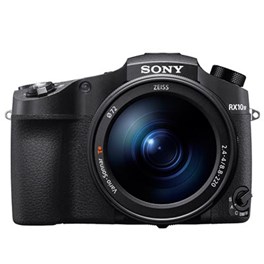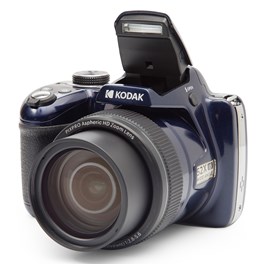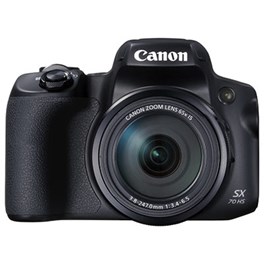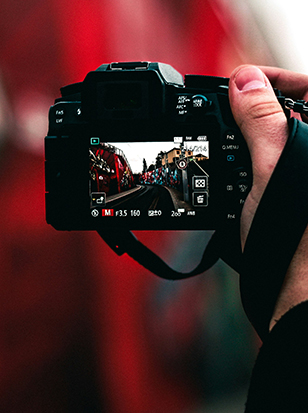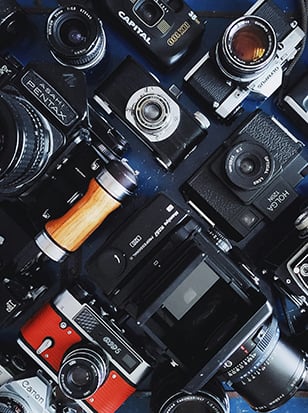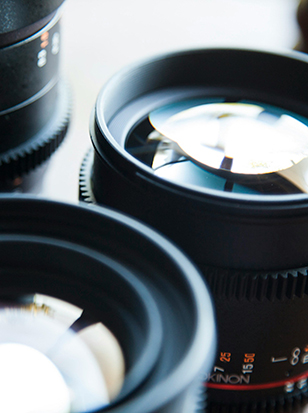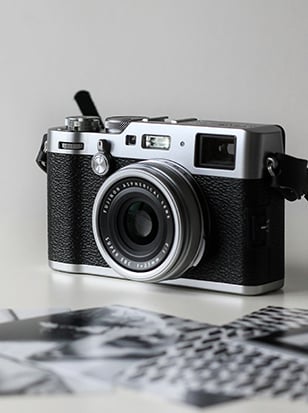
The best bridge cameras give you an all-in-one platform for getting great shots. Styled after SLRs, bridge cameras are essentially fixed lens compact cameras with one crucial difference – the fixed lens in question is a big old superzoom. With a good bridge camera, going from a wide-angle perspective to a super-zoomed telephoto is simply the matter of turning your wrist – and they are generally a more affordable choice than a mirrorless or DSLR camera with a big optical zoom lens.
Bridge cameras can range significantly in price, size and image quality – so we’ve put together this guide to help you find the best. With options from Sony, Panasonic, Canon and Kodak, these are the bridge cameras that have most impressed our team, with cheap options as well as the high-end stuff.
We’ve included the pros and cons of each camera to help give you an idea of which one could be right for you. So, let’s get started.
Quick Navigation
Our top picks
Sony Cyber-Shot RX10 IV Digital Camera
£200 Cashback
The Sony Cyber-Shot RX10 is the 4th iteration of Sony's widely popular RX10 series. It boasts an industry leading autofocus speed of just 0.03 seconds, a fixed Zeiss Vario-Sonnar T* 24-600mm lens, and 4K internal video recording. All of that and the the RX10 IV also packs a powerful 20.1MP 1.0-type sensor. Fast processing speeds also allow for the camera to achieve 24fps continuous shooting and super slow-motion up to 1000fps. The RX10 IV really do have a full arsenal of features!
£1,478.00 View
Pros:
- High-quality Zeiss-made zoom lens
- Fast shooting and focusing
- Brilliant image quality
Cons:
- More expensive than other bridge cameras
For many, the original Sony RX10 was what kickstarted the bridge camera renaissance back in ye olden days of 2013, pairing a 1in sensor with premium glass to show that bridge camera users didn’t have to put up with shoddy quality. The RX10 IV continues that fine tradition – its 20.1MP 1in sensor uses the latest stacked design to bolster performance, and this is paired with the Bionz X processor that originally appeared in Sony’s sports-focused speedster, the A9.
Accordingly, the RX10 IV can fire off shots at 24fps, and when you put this together with a gorgeous Zeiss Vario-Sonnar T* 24-600mm f/2.4-4 lens, you have a staggeringly impressive photography machine. This is currently the pinnacle of bridge camera technology – and is likely to remain so.
Kodak Pixpro AZ528 Digital Camera - Midnight Blue
The Kodak Pixpro AZ528 Digital Camera is perfect for photographers seeking zoom range without the hassle of multiple lenses. It boasts a 16mp resolution and scene modes which automatically adjust for technical aspects. Get close to the action or capture vast landscapes with a 52x optical zoom and 24mm wide-angle lens. The AZ255 features optical image stabilisation and shoots 1080p Full HD videos.
£249.00 View
Pros:
- Big zoom range
- Incredible value for money
- Optical stabilisation
Cons:
- Fixed rear screen
- No viewfinder
One of the newest bridge cameras around, the Kodak Pixpro AZ528 has proven that the format doesn’t quite belong in the past just yet. It pairs a 16MP 1/2.3-inch sensor with a 52x optical zoom lens that starts out at an equivalent of 24mm and can reach a whopping 1248mm equivalent. It also boasts 6fps burst shooting, and a sensible control layout that makes it intuitive to operate – though be aware the rear screen is fixed, and there’s no viewfinder to speak of
However, the real ace in the hole for the Kodak Pixpro AZ528 is its price tag – this bridge camera offers absolutely tremendous value for money. And what’s more, if it’s still out of your budget, Kodak also offers even cheaper bridge cameras with shorter zoom ranges. There’s the Kodak Pixpro AZ405 (40x optical zoom) and the ultra-affordable Kodak Pixpro AZ255 (25x optical zoom).
Panasonic Lumix DMC-FZ2000 Digital Camera
The Panasonic Lumix DMC-FZ2000 is a highly regarded bridge camera that offers a huge amount of features and quality to its user. It has a large and sensitive 1-inch MOS sensor capable of capturing super sharp images in all lighting conditions. It also has an impressive 20x optical zoom and the ability to capture stunning 4K video in MOV/MP4 formats that makes it suitable for photographers and videographers alike. The lens itself has been built with Leica glass components and in 35mm terms is equivalent to a 24-480mm lens. It's been constructed out of 16 elements in 11 groups and the f/2.8-4.5 aperture delivers a high-quality optical performance with little ghosting.
£899.00 View
Pros:
- Lots of useful video features
- Built-in stabilisation and ND filters
Cons:
- Doesn’t zoom as far as the RX10 IV
With its 1in sensor and broad zoom range, the original FZ1000 presented a more affordable alternative to Sony’s Cyber-shot RX10 line – and with the FZ2000 the company refined this formula to create a hugely impressive bridge camera. While the sensor from the original appears to be unchanged, Panasonic has furnished the model with a fresh 24-480mm (equivalent) F2.8-4.5 optic, augmented by stabilisation and built-in ND filters.
The big addition is ramped-up video recording, the Lumix FZ2000 having been equipped with a huge range of pro-level features, including the option to record in both DCI 4K and UHD 4K flavours. Video shooters will also be pleased to note that the FZ2000 sports microphone and headphone sockets.
Canon PowerShot SX70 HS Digital Camera
The Canon PowerShot SX70 HS is pack of Canon's SX-series of super-zooms camera line. It features a huge 65x zoom which equivalent to a 21-1365mm focal range, which is an impressive reach to say the least. The camera can take RAW format images and can record 4K video footage. With Wi-Fi and Bluetooth connectivity, the powerful SX70 allows its user to have the control of a DSLR and then high-end features of a DSLR, in a lightweight and portable camera.
£579.00 View
Pros:
- Can burst-shoot at up to 10fps
- Big 65x zoom
- Handles well with sturdy handgrip
Cons:
- Max 4K frame rate of 24p
Canon’s impressive bridge camera ticks all the boxes you’d want. The PowerShot SX70 HS packs in a zoom lens with a beefy 65x optical range, running from 21mm to 1,365mm equivalent. With built-in stabilisation and impressive autofocus, it’s equipped to handle shooting at such extreme range – and you can even use the digital zoom to further extend the reach to frankly silly levels.
With a solid handgrip and a vari-angle LCD screen, the PowerShot SX70 HS feels good to use, and with a total weight of just 610g, carrying it doesn’t feel like you’re lugging a brick around all day. Those who like to spend time post-processing their images will appreciate being able to shoot in uncompressed raw format.
Pros:
- High-quality 16x zoom lens
- Effective stabilisation
- Vari-angle LCD screen and big electronic viewfinder
Cons:
- No weather sealing
This powerful, versatile bridge camera builds brilliantly on the success of the FZ1000. A 25-400mm Leica F2.8-4.0 DC lens sits in front of a 20MP 1-inch sensor, a combination that allows the camera to produce fantastic stills and 4K video. The 5-axis Hybrid OIS+ (Optical Image Stabilizer) compensates for camera shake to expand the camera’s utility in low light, as well as making the outer end of the zoom lens much more useable when shooting handheld
Panasonic’s DFD (Depth from Defocus) autofocus, powered by a linear motor, ensures that the FZ1000 II is capable of burst shooting at up to 12fps with autofocus. There’s plenty of tactile control too for those who prefer to operate a camera via physical controls, including an intuitive control ring and 13 function buttons.

FAQs
What is a bridge camera and how does it differ from other types of cameras?
A bridge camera is a hybrid between compact and DSLR/mirrorless cameras, offering larger sensors and versatile zoom lenses in a more portable form. Unlike compact cameras, bridges provide superior image quality and extensive focal range. They're more compact and user-friendly than DSLRs, making them ideal for enthusiasts.
What are the advantages of using a bridge camera?
Bridge cameras offer versatility with their wide focal range in a single lens, making them suitable for various shooting scenarios. They're portable, lightweight, and feature intuitive controls, appealing to both beginners and enthusiasts alike.
What are the limitations of bridge cameras?
Bridge cameras are limited by their smaller sensors, fixed lenses, and fewer customisation options compared to DSLRs or mirrorless cameras, compromising image quality and flexibility.
Are bridge cameras suitable for professional photography?
While not typically preferred by professionals due to their limitations, bridge cameras can suffice for specific professional tasks such as travel or documentary photography, offering convenience and decent image quality.
How do I choose the right bridge camera for my needs?
It’s best to think about what you want to photograph first. Once you know that, it’ll be easier to consider sensor size, zoom capabilities, manual controls, ergonomics, and additional features such as Wi-Fi connectivity or weather resistance.
How do we decide?
Our in-house photography experts, store staff and partners all work collaboratively to pour over these guides. The cameras and equipment recommended in our guides are based on their personal opinion, empirical experience and of course, feedback from our customers. We way up price, features, quality and the all-important 'je ne sais quoi' to make sure we recommend products that will delight and inspire.
If you would like more advice on any purchase our contact centre staff are here to help. Alternatively, you can reach us via email or social media. And don't forget. If you were to purchase anything based on our recommendations you'll be covered by our full returns policy
